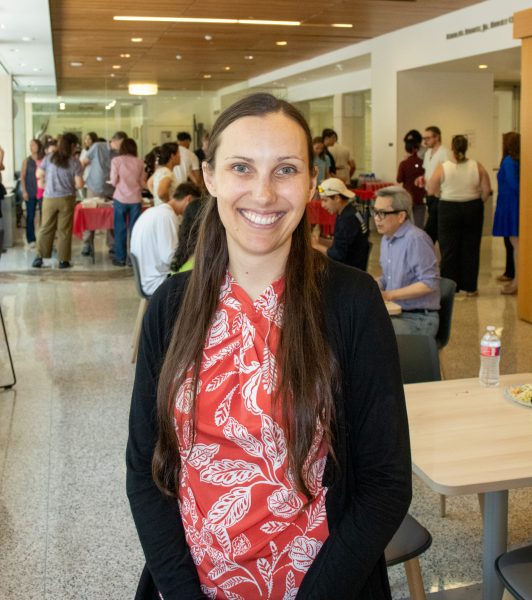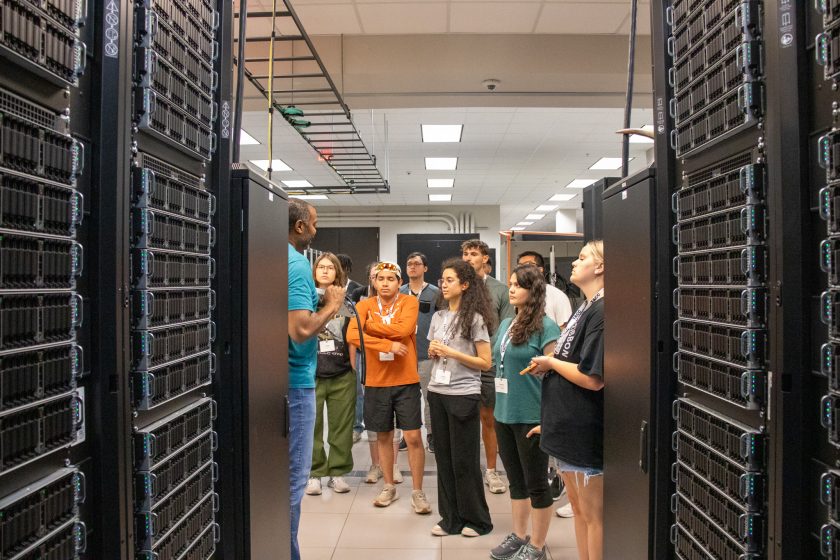New RTX Director Shares Vision for Research Program
June 6, 2025

If the key to getting students engaged with the geosciences is making it relatable to their lives, then Christine Simurda believes she has a lot of good material to work with. Every time students go outside, look out a window, or use Google Maps, for example, there’s a potential geosciences perspective to consider.
Simurda recently joined the Jackson School of Geosciences as an assistant professor of practice in geoscience education and the director of the Research Traineeship Experience (RTX), the school’s summer research program for undergraduates interested in the geosciences.
RTX, which began June 2, brings 20 undergraduate students from across the country to The University of Texas at Austin for nine weeks to conduct research, attend professional training workshops, connect with mentors, and start planning out their future in the geosciences, whether that begins in graduate school or in a profession.
During the rest of the school year, Simurda will focus on helping faculty members and students prepare effective research proposals. Key to this is finding ways that the research can benefit communities outside of the university, Simurda said, such as residents of Austin or organizations that may be able to utilize research findings.
“I am here to support the students and faculty to make sure that we as the Jackson School of Geosciences put our best foot forward — that we are on the cutting edge and a beacon of leadership in our field,” she said.
Simurda will also be teaching at the Department of Earth and Planetary Sciences and developing new remote sensing courses for its curriculum. Utilizing the department’s drone lab, Simurda will teach students about experimental drone-based remote sensing applications.
Before joining the Jackson School, she spent five years as a researcher at the Applied Research Laboratories at UT’s J.J. Pickle Research Campus, using remote sensing data to interpret surface structures. She received her doctoral degree in geology and planetary science from the University of Pittsburgh, where she researched lava flows on Earth and Mars, also using remote sensing techniques.
One thing she’s hoping to build upon in this geo-educator role is the department’s focus on experiential learning. This is one of the most effective ways to create memories for students and drive home concepts that may otherwise feel more abstract, Simurda said. For example, a class that focuses on the science of natural hazards could be paired with a field experience that familiarizes students with natural hazard management and response.
“Seeing how a management team responds and how they are using our models and data would be a really great way to advance that connection,” she said.
How educators connect with students is constantly changing, both in the classroom and in recruitment. A component of the geo-educator position is taking stock of what students are interested in and getting on their level, Simurda said.
“I want to make sure that we are leveraging new ways of attracting students, retaining students, and making sure that we are not stagnant, because we always have to continue moving forward,” she said.

